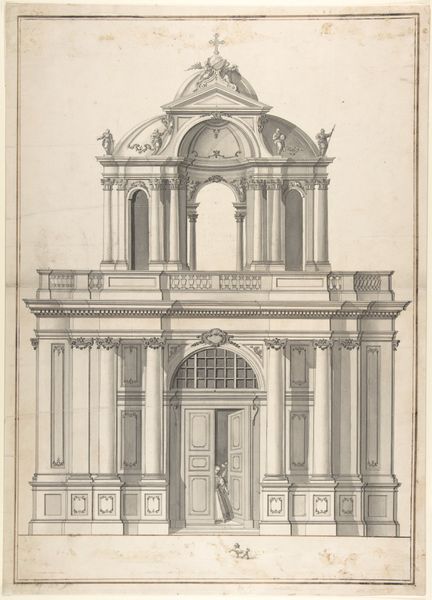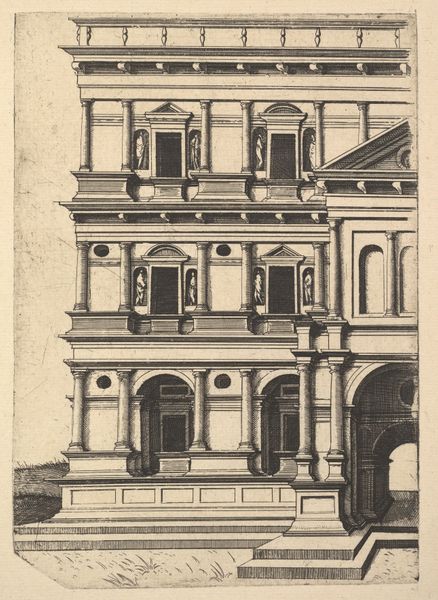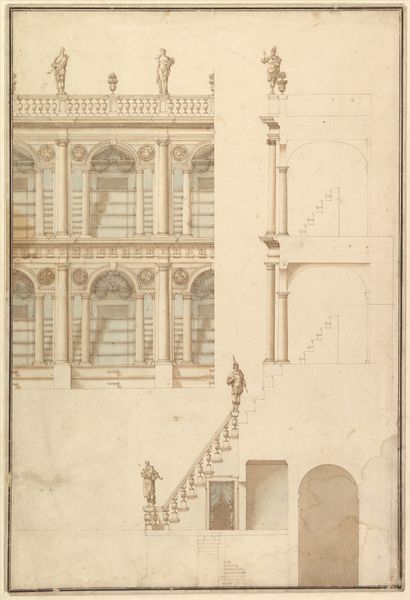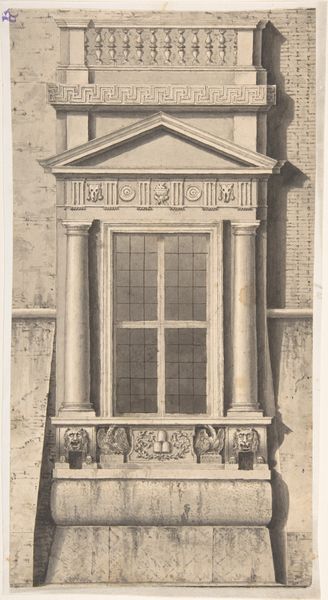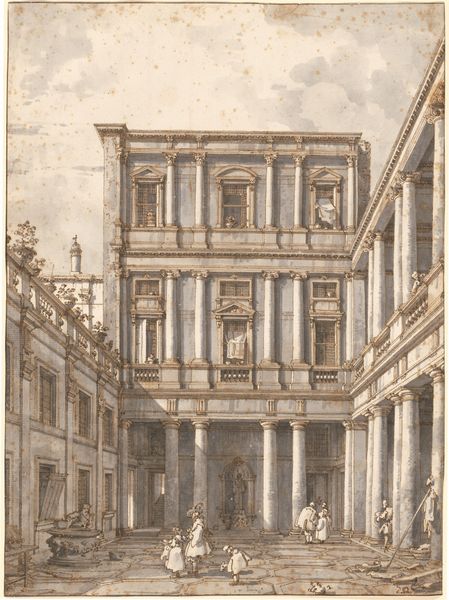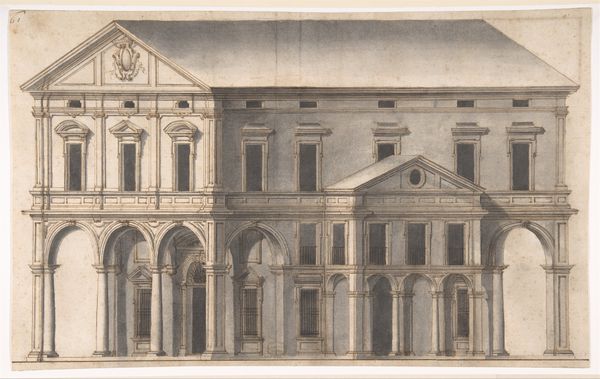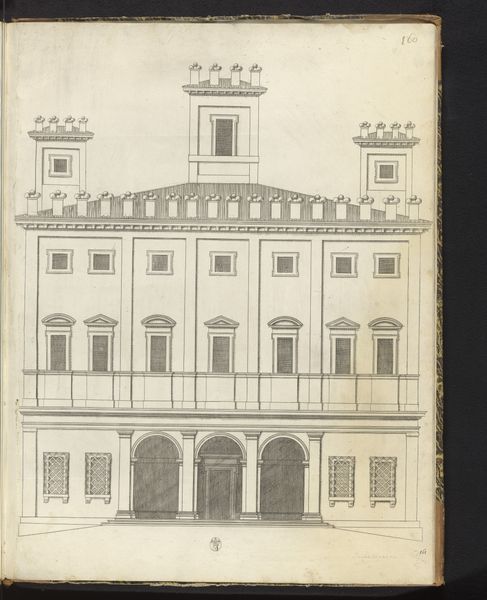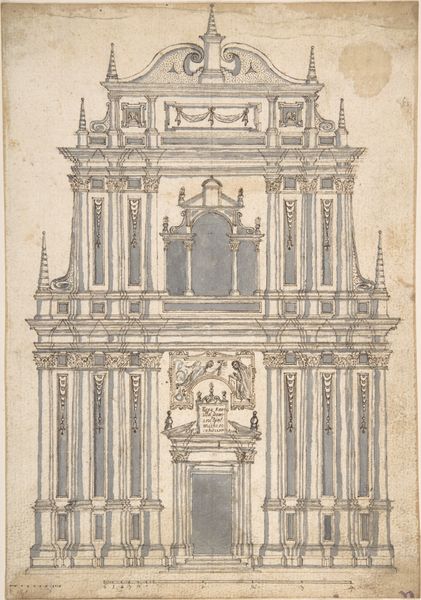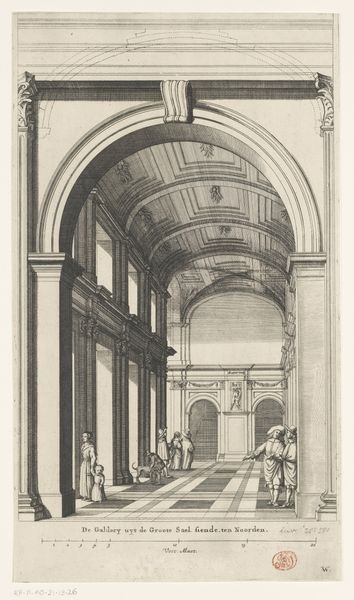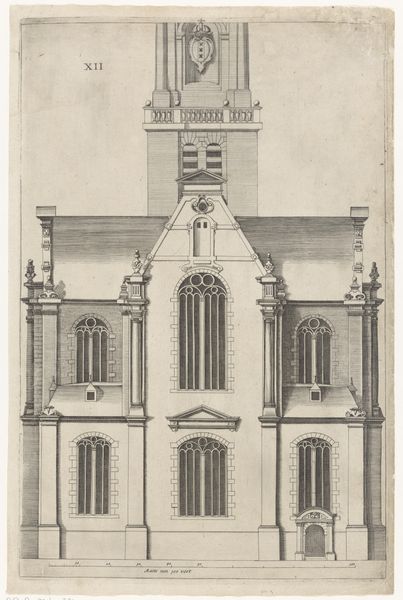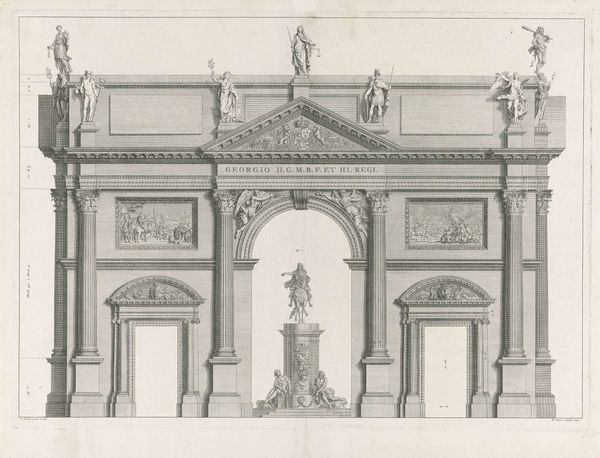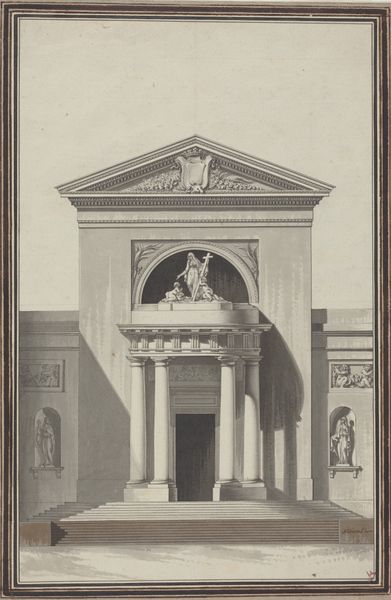
drawing, print, pencil, architecture
#
architectural sketch
#
drawing
#
neoclacissism
# print
#
pencil sketch
#
etching
#
pencil
#
architectural drawing
#
architecture
Dimensions: 10 x 7 1/2in. (25.4 x 19.1cm)
Copyright: Public Domain
Curator: At first glance, this architectural drawing feels quite restrained, almost austere in its meticulous detail. What's your impression? Editor: I find it imposing. There is a real weight in its precise lines and symmetrical composition. It demands respect through its measured elegance. This is "Design for a Church Façade" by Giuseppe Jarmorini, likely created between 1732 and 1816. The medium is listed as print, with both pencil and etching evident. Curator: The layering of print and drawing intrigues me. It indicates a complex process. Consider the materiality: the tooth of the paper, the graphite applied in various densities, the acid biting into the printing plate. Each mark represents a deliberate decision about how to realize this architectural concept. This piece reduces the space to simple planes to provide all necessary details and information to the artisans. Editor: Exactly. And this relates directly to the Neoclassical movement that heavily informs it. Look at how Jarmorini draws from the vocabulary of ancient Greece and Rome – the columns, the pediment, the statues within niches – it all speaks to a very specific cultural aspiration: the desire to create a visual language of civic virtue and order. Churches in that time began to reflect similar characteristics as monuments rather than places of community gatherings. Curator: Right, Neoclassicism's social impact cannot be understated, especially its use as a means of controlling artistic production via stylistic and technological applications of a by-gone era. This print, and possibly multiples, provided accessible templates for construction and for dissemination across communities under Papal rule. How did these stylistic elements then impact a local landscape by controlling materials and methods used for a Church in Naples? Editor: The church’s role in communicating power – both spiritual and temporal - would become intrinsically tied to that specific neoclassical vocabulary. What do you think this design being memorialized in a print tells us about its social function? Curator: It speaks volumes about the intended reach. It ceases to be solely a functional diagram; it turns into an object of consumption and reverence as well. A symbolic echo if you will. I've enjoyed seeing the possibilities in this. Editor: Indeed, a potent reminder that architecture can convey a very constructed reality and message.
Comments
No comments
Be the first to comment and join the conversation on the ultimate creative platform.
